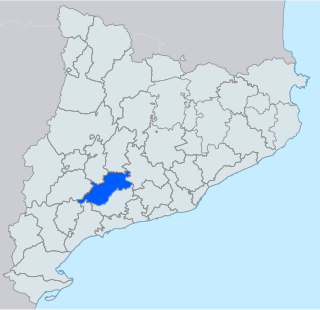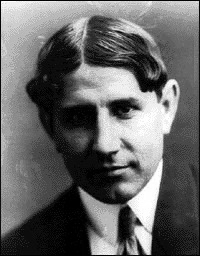
Conca de Barberà is a comarca (county) in the region of Camp de Tarragona, Catalonia, Spain. Its total area is 650.24 km2 (251.1 sq mi), and its capital is Montblanc.

Pablo Emilio or Pau Emili Gargallo, known simply as Pau or Pablo Gargallo, was a Spanish sculptor and painter.

The Enciclopedia universal ilustrada europeo-americana is a Spanish encyclopedia. It comprises 72 volumes published from 1908 to 1930 plus a ten-volume appendix published 1930–33. Between 1935 and 2003, 33 supplemental volumes were published plus an index, another A–Z appendix, and an atlas, for a total of 118 volumes. Each of the volumes vary in length. As of 1986, it is the longest printed encyclopedia with 105,000 pages and 165,200,000 words.

The Académie des Beaux-Arts is a French learned society based in Paris. It is one of the five academies of the Institut de France. The current president of the academy (2021) is Alain-Charles Perrot, a French architect.
Orquesta Sinfónica de Galicia is a Spanish orchestra, created in 1992 and based in A Coruña. Its conductor is Dima Slobodeniouk.

The ippon seoi nage is a throw in judo. It is a variant of Seoi nage, and is one of the nineteen accepted techniques in Shinmeisho No Waza of Kodokan Judo. It is classified as a hand throwing technique, or te-waza. Ippon seoi nage literally means "one arm over the back throw", but has also been translated as a "one arm shoulder throw", as the opponent or uke is thrown over the thrower or tori's shoulder.

Reus Deportiu is a Catalan sports club best known for its professional roller hockey team based in Reus, Catalonia, Spain.
In the 1930s Spain became a focus for pacifist organisations including the Fellowship of Reconciliation and the War Resisters' International whose president was the British MP and Labour Party leader George Lansbury. Prominent Spanish pacifists such as Amparo Poch y Gascón and José Brocca supported the Republicans in the Spanish Civil War. Brocca argued that Spanish pacifists had no alternative but to make a stand against what he viewed as fascism. He put this stand into practice by various means including organising agricultural workers to maintain food supplies and through humanitarian work with war refugees.

Conca de Barberà is a Spanish Denominación de Origen Protegida (DOP) for wines located in central Catalonia in the northern portion of the Tarragona Province. Situated within the river valleys of the Francolí and Anguera, it has historically been known for its white wines, but has been gaining more attention for its reds, especially those from the native Trepat grape. Today, the Conca de Barberà DOP mainly produces red wines, along with whites, and minor amounts of rosés and sparkling wines.

Capçanes is a Catalan village in the province of Tarragona in north-eastern Spain. It is situated in the comarca of Priorat.
Espasa-Calpe was a Spanish publisher which existed during the 20th century. It was created in 1925, by the union of Editorial Calpe, founded by Nicolás María de Urgoiti in 1918, and Editorial Espasa, founded by José and Pau Espasa i Anguera in 1860.
NeuroRacer is a video game designed by a team of researchers at the University of California, San Francisco led by Adam Gazzaley as a way to help with mental cognition. It was designed as an "Adam Gazzaley intervention" for "top-down modulation deficits in older adults." A study on 60- to 85-year-olds showed that the multitasking nature of the game caused improvements in tasks outside of the game involving working memory and sustained attention. The game is presented as a driving simulator. Gameplay involves driving a vehicle down windy roads and pushing buttons when a sign appears.
Events in the year 1911 in Spain.
Manuel "Manolo" Márquez Roca is a Spanish professional football manager and former player, who is currently the head coach of Indian Super League club Goa and the Indian national football team.

The Catalan Republic was a state proclaimed in 1931 by Francesc Macià as the "Catalan Republic within the Iberian Federation", in the context of the proclamation of the Second Spanish Republic. It was proclaimed on 14 April 1931, and superseded three days later, on 17 April, by the Generalitat de Catalunya, the Catalan institution of self-government within the Spanish Republic.
Contemporary Culture Index (ccindex) is a multidisciplinary international database which provides access to publications in "architecture, art, cinema, cultural studies, design, literature, music, philosophy, photography and social sciences". It was founded in 2002 by Javier Anguera Phipps, serials librarian at the library of the Fundació Antoni Tàpies in Barcelona, and in 2013 it received a grant from the Graham Foundation.

Federalism in Spain began in the 1830s, although it has its roots in the 1790s. The first and only attempt to establish a federal state in Spain occurred during the First Spanish Republic (1873-1874). After this failure, federalism was a minority political current. In the Second Spanish Republic and in the Transition, an intermediate model was chosen between federalism and centralism — the integral state, in the first case; and the regional state in the second.
Joan Esteva Pomares is a former Spanish footballer and currently a football coach.

The Assembly of Catalonia was a unitary body of the anti-Francoist opposition of Catalonia created in November 1971. Its fundamental demands were the demand for democratic freedoms, the general amnesty for political prisoners and the achievement of the statute of autonomy, which were synthesized in the motto of Freedom, Amnesty, Statute of Autonomy. In addition to the political parties—all of them clandestine—forces of various kinds were part of it, such as trade union organizations, professional groups, representatives of the university movement, neighborhood movements, Christian groups, regional assemblies, etc. The objectives of the Assembly were achieved during the democratic transition, especially when the Cortes approved the Statute of Autonomy of Catalonia in 1979.
Antonio Anguera Bernaus was a Spanish footballer who played as a defender for UE Lleida and FC Barcelona.















